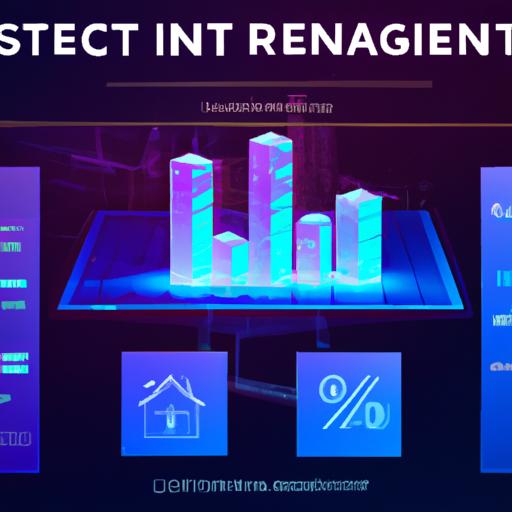Unleashing the Power of Google Cloud Platform API
Introduction to Google Cloud Platform API
In today’s fast-paced digital landscape, harnessing the potential of cloud technology is essential for developers seeking innovation and efficiency. google cloud platform api emerges as a transformative tool, offering a gateway to a myriad of services and functionalities. This API, intricately woven into the fabric of Google’s robust infrastructure, empowers developers to optimize performance, enhance scalability, and drive seamless integration.
As we delve into the realm of Google Cloud Platform API, we encounter a world where possibilities abound and creativity thrives. This dynamic interface not only simplifies complex processes but also paves the way for groundbreaking solutions. By bridging the gap between applications and services, Google Cloud Platform API propels developers towards unparalleled success, revolutionizing the way we interact with technology. Join me on this exhilarating journey as we unravel the transformative capabilities of Google Cloud Platform AP
Understanding Google Cloud Platform API
Demystifying APIs
In the realm of technology, APIs serve as the invisible bridges that connect various software applications and systems. An API, short for Application Programming Interface, acts as a messenger, facilitating communication between different software components. Think of it as a language that allows applications to interact and share data seamlessly. In the context of Google Cloud Platform, APIs play a pivotal role in enabling developers to tap into a plethora of services and functionalities, unlocking a world of possibilities.
Diving into Google Cloud Platform APIs
Google Cloud Platform boasts a diverse array of APIs tailored to cater to the unique needs of developers across industries. From Cloud Storage API for managing data storage to Cloud Vision API for image recognition, each API offers a specialized set of tools and services. By understanding the nuances of these APIs and their functionalities, developers can leverage the full potential of Google Cloud Platform to streamline processes, enhance performance, and drive innovation. Let’s embark on a journey to explore the myriad APIs available on Google Cloud Platform and unravel the transformative capabilities they offer.
Benefits of Using Google Cloud Platform API
Cost-effectiveness and Scalability
Embracing Google Cloud Platform API opens the doors to a realm of cost-effectiveness and scalability for developers. By leveraging this powerful tool, businesses can optimize resource allocation and minimize operational costs. The scalability offered by Google Cloud Platform API allows for seamless expansion as demands fluctuate, ensuring that applications can grow organically with evolving needs.
Improved Security and Reliability
Security is paramount in the digital age, and Google Cloud Platform API offers top-tier protection for sensitive data and operations. With robust security measures in place, developers can rest assured that their applications are shielded from potential threats and vulnerabilities. Furthermore, the reliability of Google Cloud Platform API ensures uninterrupted access to services, guaranteeing a smooth and seamless user experience for both developers and end-users.
Integration with Other Google Services
One of the standout advantages of Google Cloud Platform API is its seamless integration with other Google services. This interconnected ecosystem allows developers to tap into a wide array of tools and functionalities, enhancing the overall performance and capabilities of their applications. By leveraging this integration, developers can unlock new possibilities and drive innovation in their projects.
How to Get Started with Google Cloud Platform API
Creating a Google Cloud Platform Account
To embark on your journey with Google Cloud Platform API, the first step is to create a Google Cloud Platform account. By signing up for an account, you gain access to a wealth of resources and tools that will enable you to leverage the full potential of the platform. Simply follow the registration process, and you will soon find yourself at the gateway to a world of innovative possibilities.
Generating API Keys and Credentials
Once your Google Cloud Platform account is set up, the next crucial step is to generate API keys and credentials. These unique identifiers play a pivotal role in authenticating your access to the API services. By obtaining and securely storing these keys, you ensure a seamless and secure interaction with the platform, laying the foundation for successful development endeavors.
Setting Up Authentication and Authorization
Authentication and authorization are key components in securing your interactions with Google Cloud Platform APEstablishing a robust authentication process ensures that only authorized users can access the API services, safeguarding sensitive data and maintaining the integrity of your applications. By implementing effective authentication and authorization mechanisms, you fortify your development environment and pave the way for a secure and efficient API integration.
Best Practices for Using Google Cloud Platform API
Following API Documentation and Guidelines
When embarking on the journey of utilizing Google Cloud Platform API, adherence to the provided documentation and guidelines is paramount. By familiarizing yourself with the intricacies of the API, you gain insights into its functionalities and best practices. This proactive approach not only enhances your understanding but also ensures seamless integration and optimal performance.
Implementing Error Handling and Rate Limiting
In the realm of API utilization, encountering errors is inevitable. To mitigate potential disruptions, implementing robust error handling mechanisms is essential. By proactively identifying and addressing errors, you safeguard your applications against unforeseen challenges. Additionally, incorporating rate limiting strategies ensures that API usage remains within predefined thresholds, preventing overload and maintaining system stability.
Monitoring API Usage and Performance
Monitoring API usage and performance serves as a cornerstone for optimizing efficiency and identifying areas for improvement. By tracking key metrics such as response times, error rates, and usage patterns, you gain valuable insights into the performance of your applications. This data-driven approach enables you to make informed decisions, fine-tune your strategies, and elevate the overall user experience.
Conclusion
In conclusion, the Google Cloud Platform API stands as a beacon of innovation and efficiency in the realm of cloud technology. By seamlessly integrating with Google’s powerful infrastructure, this API offers developers a gateway to unparalleled possibilities and transformative solutions. Embracing the Google Cloud Platform API not only enhances performance and scalability but also fosters a culture of innovation and creativity within the developer community.
As we navigate the ever-evolving landscape of technology, harnessing the power of Google Cloud Platform API becomes imperative for those seeking to push boundaries and drive meaningful change. Let us embark on this journey together, leveraging the capabilities of Google Cloud Platform API to unlock new horizons and redefine the future of technology. Join the ranks of visionary developers who have embraced the potential of Google Cloud Platform API, and together, let us shape a world where innovation knows no bounds.

